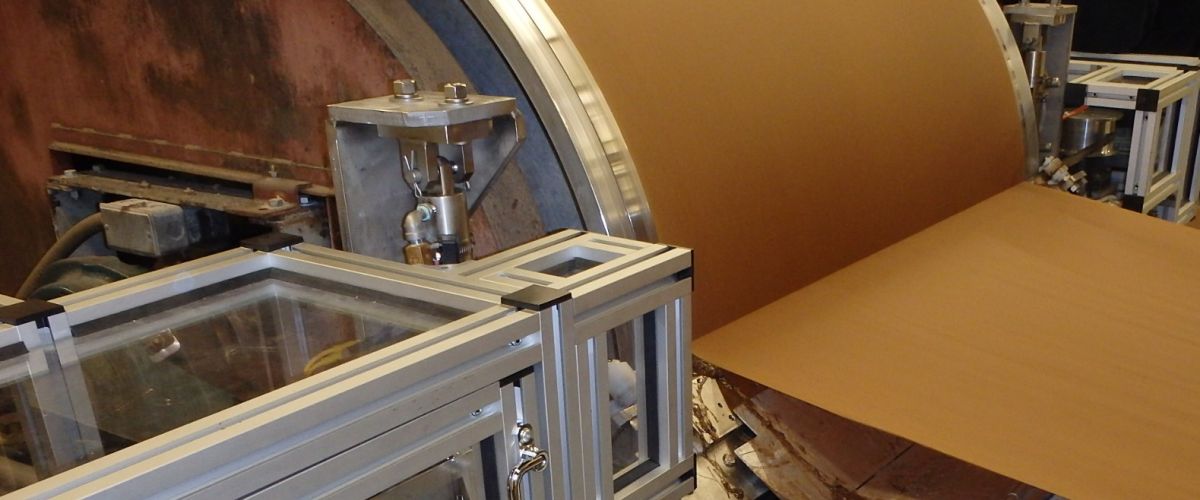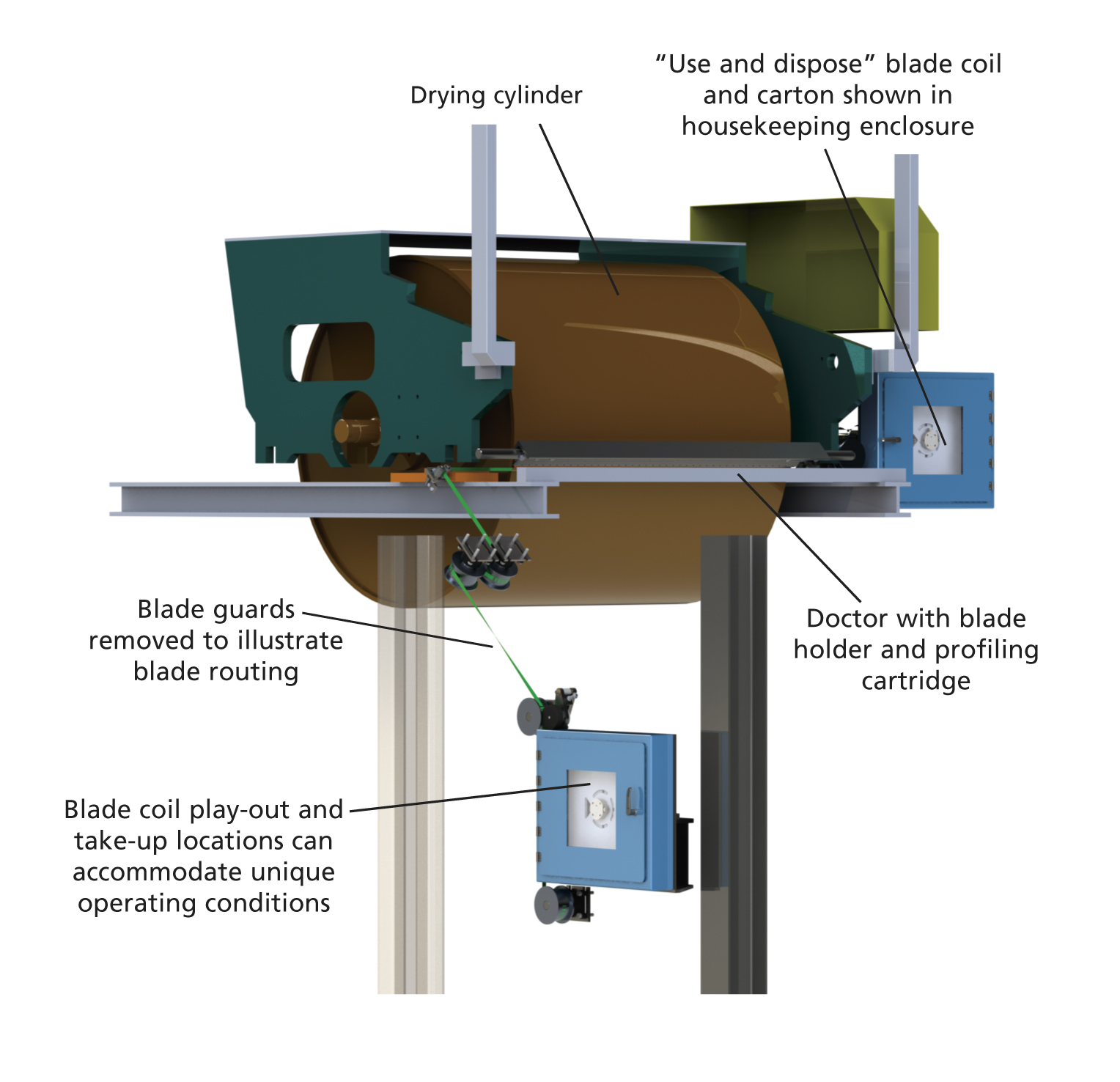
Continuous Blade Systems = Quick ROI
What do food, chemicals, cosmetics, pharmaceuticals, and tobacco have in common with the paper towels sitting on your kitchen counter? The answer lies in how they are manufactured.
The process of removing a finished product from a drum, roll, or process belt with a blade is called creping in tissue manufacturing. Optimizing the creping process used in tissue and towel making is critically important and involves cutting-edge technologies to ensure the desired product attributes are achieved during the high-speed production process. However, many of the innovations used in tissue making have not yet been transferred to other industries that could also benefit.
Pressing a metal blade against a metal roll or belt to remove a product can create several problems for the manufacturer:
- Safety. The metal-on-metal contact sharpens the blade making it a safety concern for operators.
- Blade wear. As the blade wears, it is less effective at removing the product from the drum, roll, or process belt.
- Blade changes. Changing a blade potentially places the operator at risk when handling sharp blades. Replacement blade costs can add up quickly, especially if there are multiple changes during a shift. If the blade does not last an entire production run, productivity suffers.
 While some manufacturing processes can be optimized by careful, strategic blade selection, others require outside-the-box thinking. Recently, we worked with a tobacco manufacturer that uses a stainless steel belt to dry a sheet of tobacco during a continuous process.
While some manufacturing processes can be optimized by careful, strategic blade selection, others require outside-the-box thinking. Recently, we worked with a tobacco manufacturer that uses a stainless steel belt to dry a sheet of tobacco during a continuous process.
The tobacco manufacturer used a clamp-style blade holder to load razor blade stock to the belt as it rotated over a drum. For years, management knew they were sacrificing considerable revenue due to product waste associated with each blade change. To reduce waste and increase productivity, we designed and built a continuous blade system that eliminated tobacco manufacturer’s major concerns.
A continuous blade system eliminates the need for blade changes during production runs by continuously advancing the blade through the blade holder at a pre-determined rate. The continuous blade system also improves safety by allowing new and used blade coils to be transferred in sealed containers (as shown in the image on this page).
Furthermore, the additional “slicing” action of the blade material advancing across the face of the roll/belt often improves the removal of product. This means less loading pressure can be used thereby increasing the life of the drum, roll, or process belt.
Lastly, this tobacco manufacturer received payback on their investment in less than six months.
Related Articles
Tagged with
Author
Share
Let’s Connect
Connect with Kadant Solutions Division on LinkedIn to learn more about our employees, products, and services.
